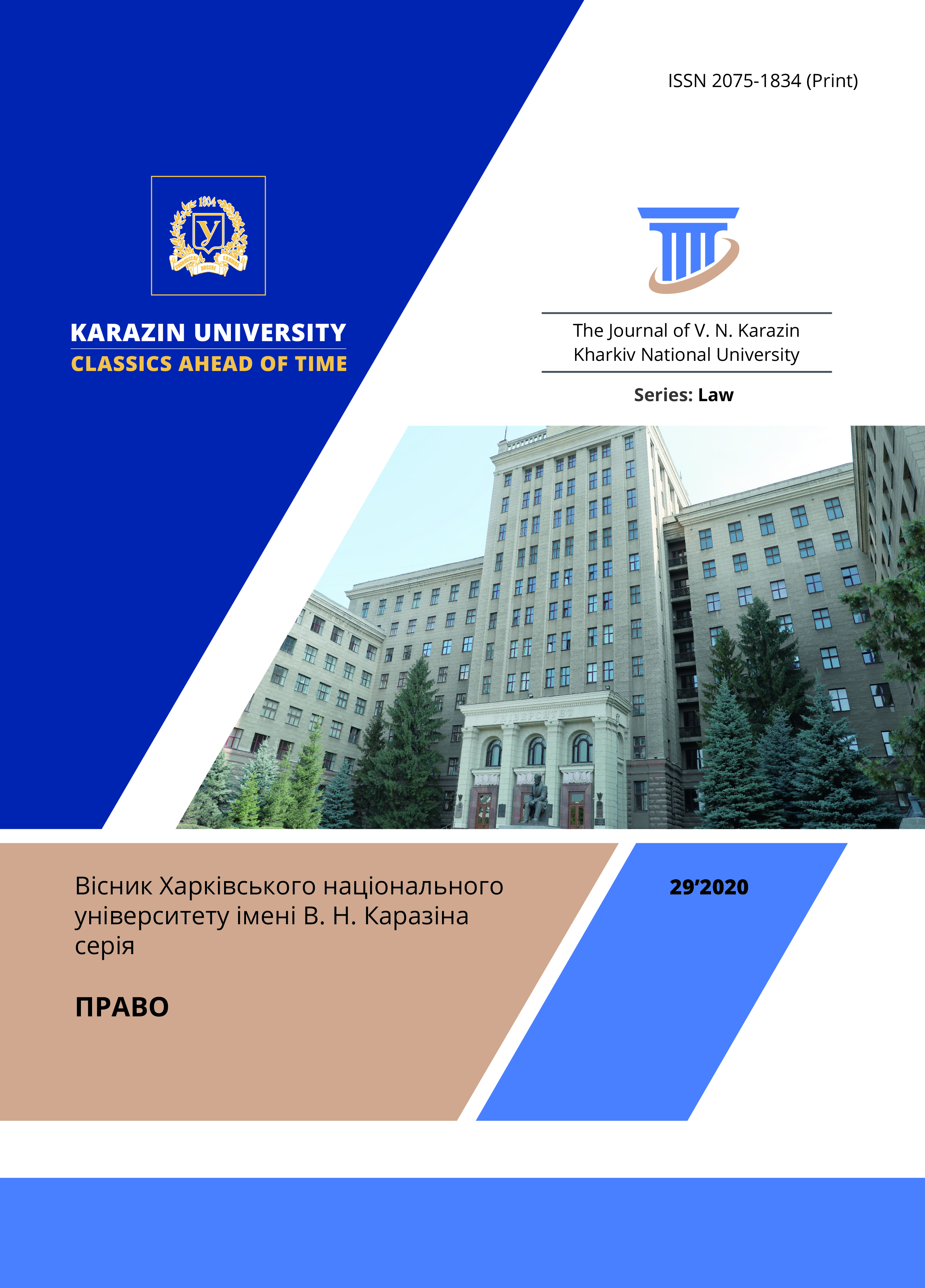EU SECURITY & DEFENSE POLICY: THE EVOLUTION OF FORMATION
Abstract
The task of building an effective security architecture facing the European Union is extremely important in that the approach to its solution will determine the nature of the relations between the countries in the region in the future. An analysis of the processes of building a common security and defense policy (EUSR) of the EU is impossible without addressing the interrelated problems: security in the EU with the European Union's place in the Euro-Atlantic processes and in the world at large.
The development of the SPBO has a significant impact on all countries of Central and Eastern Europe, including Ukraine, which explains the relevance of its further study by national science. Until the scientific and legal literature has addressed the issue of forming and developing a common security and defense policy in the EU. In many ways, this is explained by the relatively short period of existence of the ESDC as a phenomenon, with the result that, in most cases, the study focused on considering the formation, rather than the functioning, of the ESDC mechanisms designed to prepare the EU component for further work. First of all, we are referring to studies on various aspects of the history and current activities of the European Union. In addition, the authors analyze the common issues of European security: from the problems of building security models for Europe to issues related to the activities of European regional military-political organizations on the security and interaction of European and US countries in the field of the common security and defense policy of the EU. Other authors have considered some aspects in the process of becoming an EU Security Council. However, the existing work does not allow for a holistic picture of the process of forming and developing a common foreign and security policy of the EU, in turn, the continued development of a common foreign and security policy of the EU necessitates the development of new aspects of identified issues and generalizations.
In this article, the author focuses on highlighting the main stages of the EUSF formation and its importance for the effective functioning of the EU as a whole.
There are four main stages in the development of the common security and defense policy: the first stage (1992-1997) is the signing of the Maastricht and Amsterdam Treaties; the second stage (1998-2002), when the EU declared its intention to form an ESDP in Saint-Malo (1998), as well as the decisions taken at the Cologne, Helsinki, Nice, Lachen summits; the third stage (since 2003), the Berlin Plus agreement was reached (March 2003). The Council of Europe adopted the first European Security Strategy (December 2003); and the final stage began with the entry into force of the Lisbon Treaty on 1 December 2009. Within this framework, the European Union is trying to adequately respond to some of the new challenges that emerge in the process of globalization, shaping European identity.
Keywords: European Union, EU common security and defense policy, EU common foreign policy, international security, EU security policy.
Downloads
References
2. Европеизация и разрешение конфликтов: конкретные исследования европейской периферии / Б. Коппитерс, М. Эмерсон, М. Хёйссен и др., с комментариями Н. Попеску, Г. Нодиа; пер. с англ., М.: Весь Мир, 2005., 312 с.
3. Европейский союз. Прошлое, настоящее, будущее. Единый европейский акт. Договор о европейском союзе. М.: Право, 1994. 278 с.
4. Журкин В. Европейская армия: поражения и победы. Общая политика безопасности и обороны Европейского Союза. М.: Международные отношения, 2012. 192 c.
5. Журкин В.В. Военная политика Евросоюза М.: Международные отношения: Институт Европы РАН, 2014. 210 с.
6. Лафитский В.И. Миграционное право Европейского Союза // Международное и европейское право. 2005. № 1. С. 37-50.
7. Новикова Д.О. Новые инструменты международного кризисного урегулирования: опыт Европейского Союза: Институт международных исследований. М.: МГИМО: Университет, 2009. 112 c.
8. Робская С.А. Политика Евросоюза по регулированию косовского конфликта: основные этапы // Вести. Волгогр. гос. ун-та. Сер. 4, Ист. 2008. № 2 (14). С. 89-91.
9. Чимирис Е.С. Политика Европейского союза в международных конфликтах. На примере попыток урегулирования отношений между Сербией и Черногорией // Полис. – 2007. – № 4. – С. 174-187.
10. Bailesand A., Messervy-Whiting G. Death of an Institution. The end for Western European Union, a future for European defence? // Egmont Paper No. 46. May 2011. P. 42-56.
11. British-French summit. St-Malo, 3-4 December 1998. Joint Declaration / From Nice to Laeken. European Defense: core documents / Compiled by Maartje Rutten // Institute for Security Studies, EU. // Chaillot Paper No. 51. Paris, April 2002. P. 8-9.
12. From Nice to Laeken. European Defense: core documents / Compiled by Maartje Rutten // Institute for Security Studies, EU. // Chaillot Paper No. 51. Paris, April 2002. P. 70 - 100
13. From Saint-Malo to Nice. European Defense: core documents / Compiled by Maartje Rutten // Institute for Security Studies, WEU. Chaillot Papers No. 47. Paris, May 2001. P. 10-179.
14. Security and Defence Policy. The first five years (1999-2004). Ed. by Nicole Gnesotto. ISS, European Union. Paris, 2004. P. 46.
Copyright (c) 2020 Valentina Shamraeva

This work is licensed under a Creative Commons Attribution 4.0 International License.




